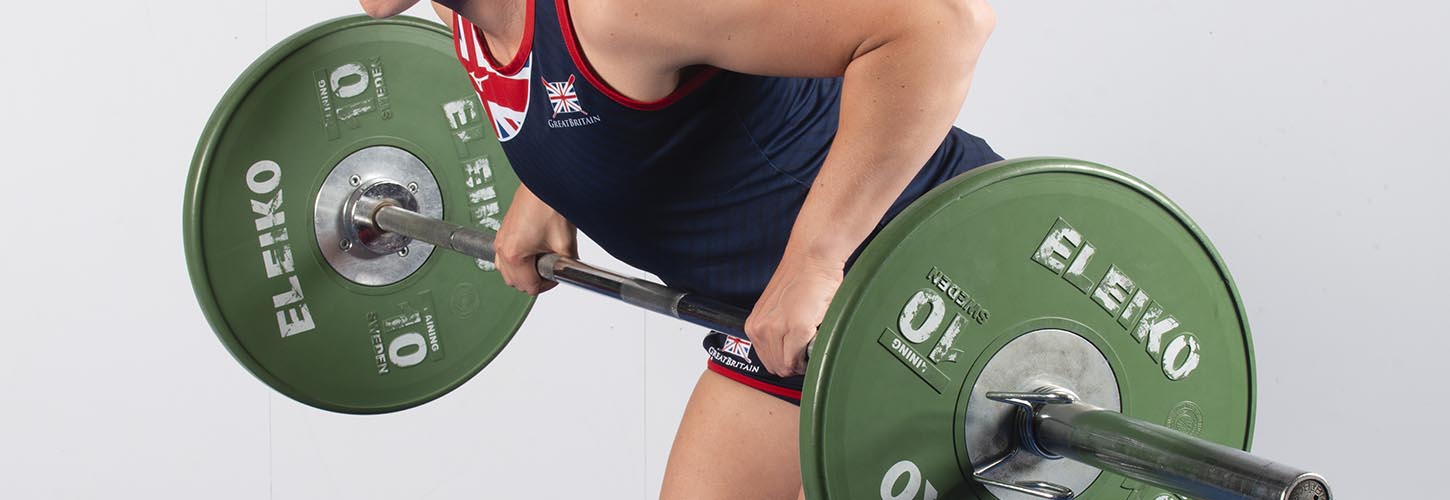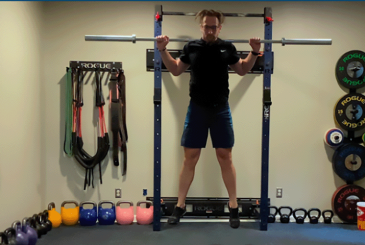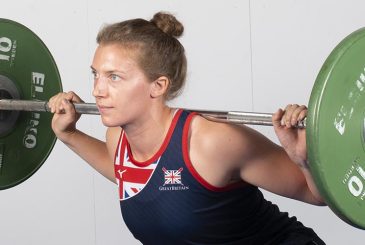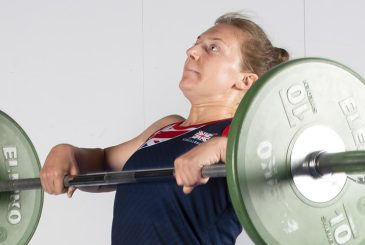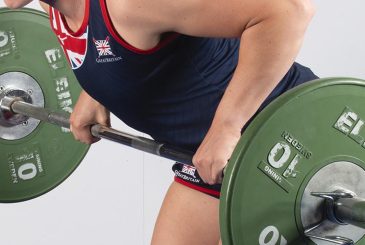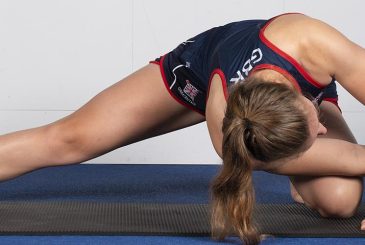Paying attention on land to the three pillars of movement, conditioning, and strength and power will maximise your effectiveness as a rower on water. Here, Nick Hartland finds out more about conditioning in the second of three articles on British Rowing’s High Quality Land Training programme
Training your body’s support network of joints, tissues, cartilage and minor muscles is vital for maximising your performance on the water.
Hard work is a given in rowing, with the phrase ‘no pain, no gain’ frequently heard in the gym. But while club rowers willingly commit to going through the pain barrier, they should also pay attention to the ‘slow burn’ second pillar of British Rowing’s new High Quality Land Training programme – conditioning.
Why do conditioning?
Without an effective support structure of joints, tissues, cartilage and minor muscles, the body can’t transfer the force of the big muscle movements effectively, and this network is what conditioning develops.
GB Start Coach Matt Paul says: “It’s one thing to be powerful and strong, but if you are not conditioned, when you try to put the power down, some will be lost in the body.
“You must condition the middle of the body to take on that massive force and transmit it effectively to the handle.”
This can be achieved by doing high reps of light loads at tempo (slowly), exercises known as ‘time under tension’ (how long a muscle is under load during a set). And while athletes should not be ‘busting a gut’ or dripping in sweat, if done properly, they will be working hard.
“This isn’t an instantaneous gain, it’s a slow burner – you are developing slow build endurance,” says GB Olympic Pathway Manager Tom Pattichis.
“Done with full range of movement, it’s hard on muscles and joints, and you will feel tired and sore afterwards.”
The conditioning element of the High Quality Land Training programme aims to improve the body’s tolerance to load, to enable it to endure thousands of strokes. this will make you more robust and give your body the foundation to train more effectively.
“It’s our responsibility to ensure they have time for conditioning to help prolong their sporting bodies – it’s as imperative as strength work”
Louise Hart, who takes conditioning sessions at Monmouth School RC, says: “It is key to a rowing programme at any level. It helps with injury prevention and aids technical development within the boat, and is arguably even more paramount with growing and developing juniors.
“It’s our responsibility to ensure they have time for conditioning to help prolong their sporting bodies – it’s as imperative as strength work.”
Matt adds: “Rowing is simple – good conditioned athletes can train more and thus, their aerobic capacity can go higher.”
“I’ve my athletes improve their personal best 2km ergo scores significantly since they started a conditioning programme; that’s how vital it is.”
Time-pressed club rowers might be tempted to skip conditioning. But it’s easy to do, taking little time and requiring little equipment, and critically, it underpins strength and power work.
“You won’t get stronger from lifting without conditioning, because the body won’t cope with the force you’re putting through it,” says Matt.
“I’ve my athletes improve their personal best 2km ergo scores significantly since they started a conditioning programme; that’s how vital it is.
“Don’t forget, you’re not looking to be stronger, you’re looking to be quicker. Well-conditioned athletes can go just as fast as stronger athletes – you see it often with top juniors.”
Advice for club rowers
While you can do specific conditioning sessions, Matt says it’s better for club rowers to do short sessions as part of a land training warm up, such as six or seven 30-second exercises.
“It’s better to micro-dose this sort of work, perhaps doing several five-minute sessions a week, as the quality is very high,” he says.
So if time is short, then doing a few shorter sessions through the week is a good alternative, and may bring better results than doing just one longer circuit each week.
“People think it’s this big extra thing, but it can be done very quickly. We do a conditioning circuit before every land training session.
“Always do it when you’re fresh; mentally you have to think hard, as there’s a lot of stabilisation, and some movements are unilateral – single leg, single arm.”
Louise, a British Rowing Championships medallist, adds: “Our programme contains a lot of single-sided exercises to ensure the boys develop their weaker side.”
The younger juniors do weekly circuits and can be given specific exercises to do at home daily.
“The biggest challenge is time and persuading them conditioning for a few minutes is as important as throwing weights around, but last season we succeeded in incorporating conditioning for all ages,” she adds.
“We spend time educating boys on why a particular exercise is on the programme so they understand the benefits in the boat.
“In the seniors in particular this has led to a higher percentage completion of the conditioning elements.”
To do time under tension exercises effectively, lift a much lighter loads than you would for strength training and take longer to lift it.
“Time under tension is more important than load. So three seconds one way, three seconds back,” says Matt. “It helps the muscles understand how to operate. Move slowly, and the muscles will come back stronger and the body becomes aware of how it needs to move.”
Tom adds: “It’s important to exercise both ways, up and down, in and out. Take the muscles and joints through the full range.
“It’s really one for everybody, from the youngest kids through to the older vets.”
“Coaches should think ‘what are we working on today, what’s the purpose?’” says Matt.
“Have different circuits such as a hip function circuit, a scapula circuit (shoulders), a trunk circuit, and a stability circuit which targets body imbalances.”
“Making conditioning enjoyable and engaging is key,” adds Louise. “Making sessions different and putting in the odd new exercise keeps things fresh.
“Adding the odd fun challenge, such as seeing if anyone can do a headstand, is also a good idea.”
Get started
Try these three conditioning exercises to develop your general athleticism for rowing.
Key points
- Without an effective support structure of joints, tissues, cartilage and minor muscles, the body can’t transfer the force of the big muscle movements effectively, and this network is what conditioning develops.
- Conditioning as part of the High Quality Land Training programme aims to improve the body’s tolerance to load, to enable it to endure thousands of strokes. It will make you more robust and give your body the foundation to train more effectively.
This article is an updated version of material first published in British Rowing’s Rowing and Regatta magazine in 2019.
Photo: Dianna Bonner.
What do YOU want to read about on British Rowing Plus?
What do you find interesting here on British Rowing Plus that you’d like more of? What haven’t we covered yet that you’d like to read about?
Let us know by emailing [email protected]


